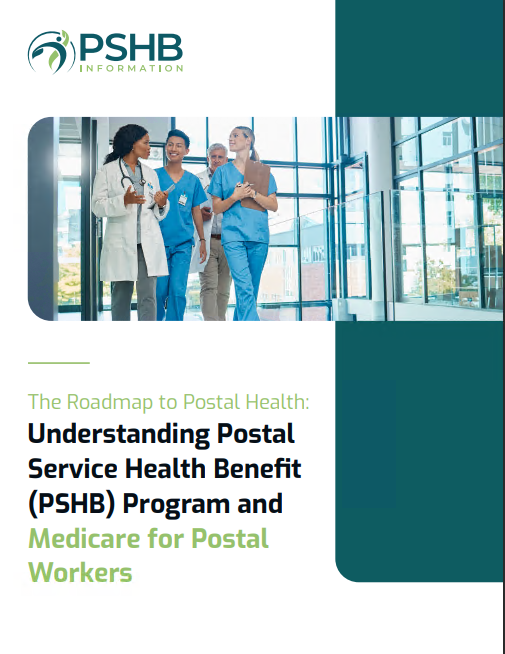Key Takeaways:
-
Navigating PSHB coverage options is essential for postal workers to make informed health plan decisions in 2025 and beyond.
-
Resources and support are available to help you understand the details, timelines, and benefits of PSHB plans.
Understanding the Shift to PSHB Coverage
As of January 2025, the Postal Service Health Benefits (PSHB) program has officially replaced the Federal Employees Health Benefits (FEHB) program for postal workers and retirees. This transition marks a significant change in the way health benefits are structured and delivered. If you’re wondering where to start or feeling overwhelmed, don’t worry—you’re not alone.
The PSHB program is designed to cater specifically to postal employees, annuitants, and eligible family members. While it offers tailored benefits, it also introduces new terms, options, and requirements that can be confusing at first. Here’s what you need to know to stay ahead and make the best choices for you and your family.
Why the Change Matters to You
The move to PSHB isn’t just a name change. It brings:
-
Streamlined Options: Plans tailored to meet postal employees’ needs.
-
Medicare Integration: Enhanced benefits for Medicare-eligible retirees.
-
Cost Savings: Opportunities to optimize healthcare spending with the right plan.
Understanding these changes can help you avoid unexpected costs and ensure you get the coverage you need. Missing key deadlines or misunderstanding the requirements could lead to gaps in your healthcare.
Key Dates to Keep in Mind
Navigating PSHB coverage begins with understanding the timeline. Here are the critical dates you need to remember:
-
Annual Open Season: Each year, from mid-November to mid-December, you can review, compare, and enroll in PSHB plans for the following year. This is your primary opportunity to make changes.
-
Qualifying Life Events (QLEs): Outside Open Season, changes can only be made due to QLEs like marriage, birth, or loss of other coverage.
-
Medicare Enrollment: If you or a family member becomes eligible for Medicare, aligning your enrollment with PSHB coverage is crucial to maximize benefits.
Mark these dates on your calendar to ensure you don’t miss any deadlines.
Exploring Your Coverage Options
PSHB offers various plan categories to suit diverse needs. While the specifics vary, here are some general features to expect:
-
In-Network and Out-of-Network Coverage: In-network care typically costs less, with higher coinsurance or copayments for out-of-network providers.
-
Prescription Drug Coverage: Plans include drug benefits, often tied to a Medicare Part D Employer Group Waiver Plan (EGWP) for Medicare-eligible enrollees.
-
Family and Individual Plans: Options for self-only, self plus one, or self and family coverage.
When comparing plans, focus on factors like premiums, deductibles, coinsurance, and out-of-pocket maximums. These determine both your upfront and ongoing costs.
Medicare Integration: A Key Component
If you’re a Medicare-eligible retiree or family member, PSHB coverage integrates with Medicare Part B. This can reduce your costs significantly by waiving certain deductibles or lowering copayments. However, you must enroll in Medicare Part B to maintain your PSHB coverage unless you qualify for specific exemptions.
Integration benefits often include:
-
Reduced Prescription Costs: Lower out-of-pocket expenses for medications.
-
Streamlined Claims: Medicare becomes your primary payer, with PSHB as secondary.
This partnership can lead to substantial savings, but only if you meet the enrollment requirements.
Tools to Help You Compare Plans
To make informed decisions, you’ll need reliable tools and resources. Here’s where you can turn:
-
Official PSHB Websites: Start with the U.S. Office of Personnel Management’s dedicated PSHB page for plan comparisons and details.
-
Plan Brochures: These provide in-depth information on what each plan covers, including benefits, exclusions, and limitations.
-
Online Calculators: Use premium and cost estimators to determine your total annual healthcare expenses.
These resources are designed to simplify the comparison process, helping you find a plan that fits your health needs and budget.
Accessing Personalized Support
Navigating PSHB doesn’t have to be a solo journey. Multiple avenues of support are available:
-
Human Resources Offices: Your local HR team can clarify plan details and enrollment processes.
-
Call Centers: Dedicated PSHB customer service lines provide quick answers to common questions.
-
Union Representatives: Many postal worker unions offer guidance on health benefits and can advocate on your behalf.
Taking advantage of these resources can make the process less daunting.
Preparing for the Next Open Season
Open Season is your chance to reassess your coverage. To prepare effectively:
-
Review Current Coverage: Analyze how well your current plan met your needs this year.
-
List Your Priorities: Consider factors like provider networks, out-of-pocket costs, and prescription drug coverage.
-
Compare Plans: Use online tools to compare multiple PSHB plans side by side.
-
Ask Questions: Reach out to support resources for clarification before making your final choice.
Being proactive ensures you’re not caught off guard by changes or unexpected costs.
Making Sense of Costs
Understanding PSHB costs helps you budget effectively. Here’s a breakdown of what to expect:
-
Premiums: These vary by plan and enrollment type (self-only, self plus one, self and family).
-
Deductibles: In-network deductibles are lower, while out-of-network costs can be significant.
-
Coinsurance and Copayments: Know your responsibilities for doctor visits, hospital stays, and prescription drugs.
If you’re transitioning to Medicare, coordinating PSHB and Medicare costs is essential to maximize your benefits.
Planning for Life Events
Life changes can impact your health coverage. Here’s how PSHB accommodates:
-
Marriage or Divorce: Update your plan to add or remove dependents.
-
New Dependents: Birth or adoption qualifies for coverage changes outside Open Season.
-
Retirement: Adjust your plan to integrate with Medicare or change your enrollment type.
Keeping your coverage updated ensures continuous access to healthcare without surprises.
What to Do If You’re Unsure
If PSHB still feels confusing, don’t hesitate to:
-
Seek Guidance: Ask questions early to avoid last-minute decisions.
-
Attend Workshops: Many postal offices host health benefits workshops during Open Season.
-
Talk to Peers: Fellow postal workers may have insights based on their experiences.
Remember, there’s no such thing as a bad question when it comes to your health coverage.
Staying Informed Year-Round
Health coverage isn’t a one-time decision. Staying informed throughout the year helps you:
-
Anticipate Changes: Keep up with updates to PSHB plans, premiums, or benefits.
-
Monitor Expenses: Track your healthcare spending to identify potential savings.
-
Evaluate Needs: Reassess your priorities annually to ensure your plan remains a good fit.
A little effort year-round can save you from surprises during Open Season.
Making Your Health Coverage Work for You
Choosing the right PSHB plan doesn’t have to be overwhelming. With the right tools, support, and preparation, you can navigate your options confidently. Focus on what matters most to you and take advantage of the resources available to postal workers. Whether it’s comparing costs, understanding benefits, or planning for life events, help is always at your fingertips.









